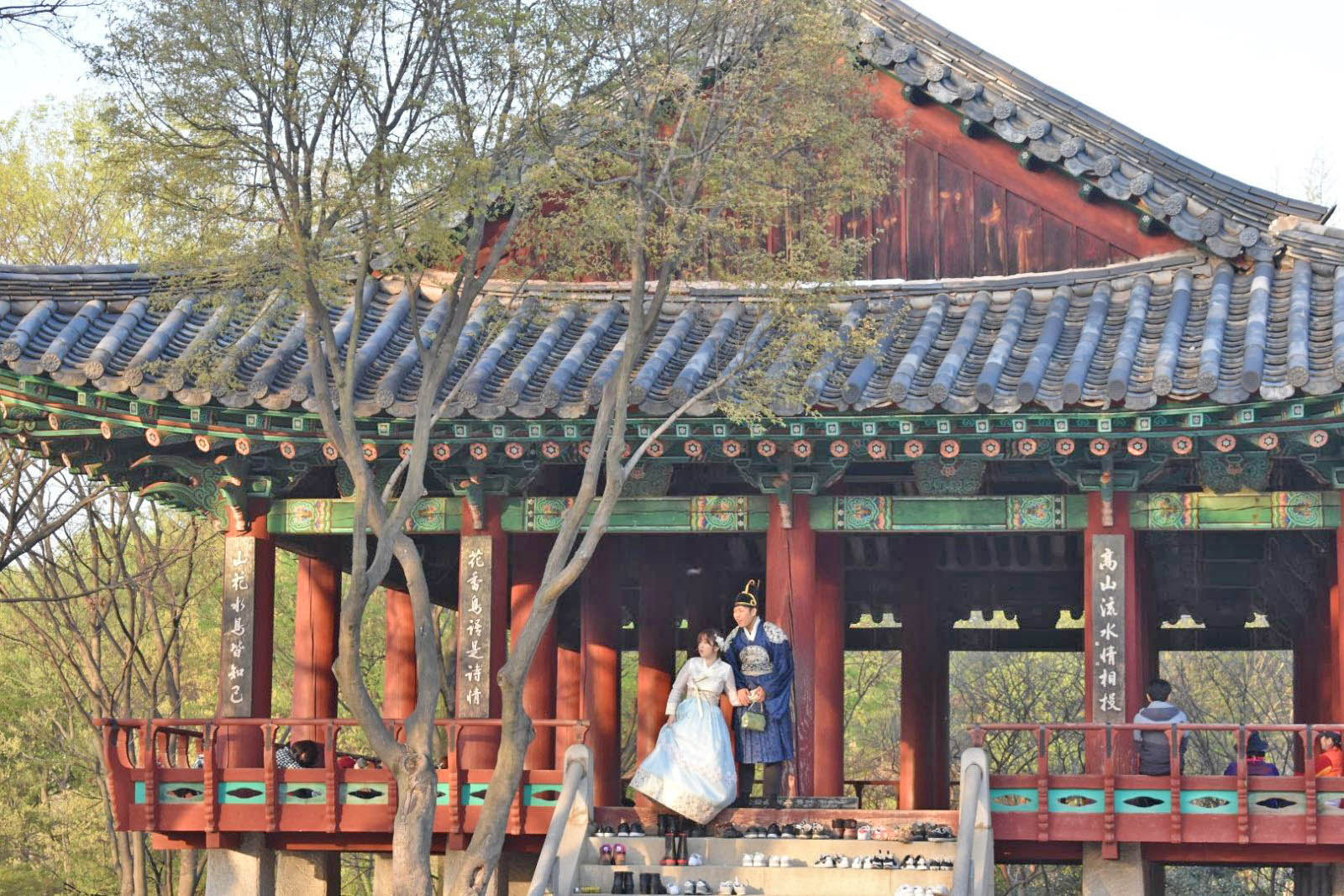
A two hour train ride south of Seoul in the heart of Korea’s breadbasket is Jeonju (전주). It’s is the capital city of the rural province Jeollabukdo (전라북도), where I lived for my first two years in Korea. Now that I’ve moved up to the suburbs of Seoul, it’s nearly shocking to me how few people ever venture out into the “countryside,” as they call it – that is, cities that aren’t Seoul or Busan. Even if you don’t live in a small farming town, there are still plenty of reasons to visit the charming city of Jeonju.
1. Hanoks. Hanoks everywhere.
Hanoks (한옥) are traditional Korean houses that are built in a very specific way. As I mentioned in my post about Gyeongbukgung Palace in Seoul, placement of buildings is very important in Korean architecture. The relationship of the house and its surroundings is paramount, the the inside of the house should be arranged to be in harmony as well. The ideal house placement is a river to the back and a river or stream to the front.
In Jeonju, there are hundreds of hanoks which together compose a village known in Korean as hanok maeul (한옥마을) – quite literally, hanok village. Between the eye-candy architecture and the mouth-watering street food, one can easily spend several hours rambling through the twisting streets here. You can even sleep in them but be warned – traditional Korean hanoks rarely have a bed. Instead, you sleep in a pallet on the floor.
2. Hanboks
Hanboks (한복) are traditional clothes which were worn daily until roughly one hundred years ago. Nowadays, they’re only worn on special occasions or anniversaries, such as weddings or lunar New Years (설날).
A popular thing to do around Jeonju – especially the aforementioned hanok maeul – is rent and wear a hanbok (한복). If you’re not into wearing enormous skirts, plenty of others are, which provides a lovely, even more traditional environment for you to wander around in.
3. The Food.
Stone-bowl bibimbap (돌솥비빔밥). The hot stone bowl makes the rice crispy and delicious!
If you love Korean food, you probably love bibimbap (비빔밥). Jeonju is the birthplace of bibimbap , which is vegetables mixed with rice, sometimes accompanied by meat or egg. There’s even an entire festival devoted to bibimbap in Jeonju every fall! It’s also one of the few dishes in Korea that you can easily get vegetarian or vegan, so if you’re coming to Korea with dietary restrictions, this will probably be your go-to dish.
Jeollabuk-do, the province of which Jeonju is the capital, is also famous for having many banchan (반찬), or sidedishes. (You can read more about banchan here.)
If that isn’t enough to convince you that Jeonju is worth a visit, you should know that a lot of Korean restaurants here in Korea often advertise their quality and number of banchan by declaring themselves to be a Jeonju-style restaurant. Oh, and in 2012 UNESCO declared Jeonju to be a Creative City for Gastronomy.
4. Makkoli
Makkoli and kimchi pancake (김치전) – one of my favorite things in the world.
Makkoli (막걸리) is Korean rice wine, usually drunk out of metal or wooden bowls. It’s unfiltered, so it contains lactic acid and good bacteria, like that are found in kimchi or yogurt. Makkoli also has vitamins, vitamins, and, at six to eight percent, a relatively low percent alcoholic content.
It’s also delicious.
Makkoli is slighly sweet and tangy, and a bit milky in texture. This means it goes perfectly with many spicy, flavor-packed Korean meals. There are several makkoli bar districts in Jeonju, all of which serve up kettles of the beverage with samplings of traditional Korean food. But be warned: this stuff is notorious for leaving you with a bad hangover.
5. History and Culture
Seoul is an incredible city. It’s also a very international city, where you can essentially avoid all forms of Korean culture if you are so prone. In Jeonju, it would be very nearly impossible to do this. If you’re visiting Korea, you might as well soak up the culture the best you can!
There are tons of cultural events and festivals that you can attend in Jeonju, ranging from a festival to celebrate traditional Korean paper, hanji (한지) to the sori (소리) festival, which centers on traditional Korean music and vocals.
If you like history, you should know that Jeonju is famous for being the spiritual capital of Korea’s prestigious Joseon Dynasty (1392-1897). The founder of Joseon, Yi Seonggye (posthumously known as Taejo, meaning “highest ancestor”) hailed from Jeonju, and his family became known as the “Yi Clan of Jeonju.”
6. Mural village
A mural on a building in Jeonju.
In addition to its hanok village, Jeonju also boasts a mural village. As I mentioned in my post about Ipoh, Malaysia, I adore street art in all of its forms. Jaman Mural Village – where you can see a good number of the murals located in Jeonju – is conveniently located quite near to the Hanok Village. The paths here are pretty steep, but the views you can get of the sunset over the hanoks is specacular.
7. Mountains
A superbloom of azaleas located only about half an hour from Jeonju!
Korea has a gorgeous countryside, which is something that you could easily miss out on if you spend all your time holed up in concrete mega-cities. Jeonju is surrounded on all sides by mountains, and only about an hour away from Korea’s largest and oldest national park – Jirisan. It would be a pity not to spend some time out of cities completely. A lot of Koreans enjoy hiking, and, if you’re lucky enough, they might even share their makkoli with you.
Story by Autumn Abroad